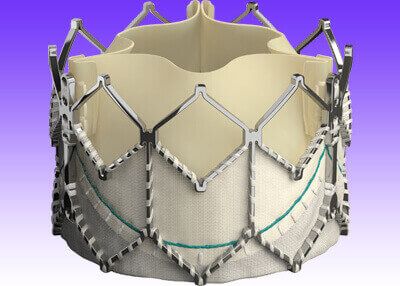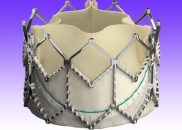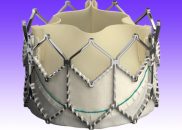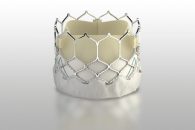The degeneration of bioprostheses in aortic position occurs at approximately after 10 to 15 years. In this scenario, the treatment of choice used to be redo surgery, but with the evolution of transcatheter aortic valve replacement (TAVR), it became a valid alternative with a level IIa B evidence. While there are currently multiple analyses of…
Surgical Bioprosthesis Deterioration: Is the Valve-in-Valve Technique a Good Option?
The use of surgical bioprostheses has significantly increased, and while they last 15 years or more, in cases where they fail (usually due to stenosis), the decision-making process is challenging. Transcatheter aortic valve replacement (TAVR) is a good alternative for this situation, although information on the subject matter is still scarce. Currently, the only available…
EuroPCR 2022 | LYTEN Trial: V-in-V in Small Annuli
TAVR is a valid alternative to treat failed surgical bioprosthetic valves, but one of its biggest challenges is patients with a small annulus. When using self-expanding valves, supra-annular implantation is recommended. However, at present, we only have retrospective, observational studies, not large enough. The LYTEN Trial is a randomized study in patients presenting failed bioprosthetic…
Device Evolution Also Impacts on Valve in Valve
TAVR to treat dysfunctional biological prosthetics (ViV) with the last generation self-expandable supra-annular prosthetic offers excellent results both clinical and hemodynamic. In addition, there were additional reductions of paravalvular regurgitation compared against the original models. The present registry published in JAHA is the most extensive to treat this issue and replicate outcomes from the clinical…
Failed Aortic Bioprosthesis: Valve in Vale or Repeat Surgery?
The Valve in Valve (ViV) technique seems to be a better option than repeat surgery for failed aortic bioprosthesis. While this strategy lacks long-term evidence to address issues such as durability, it is considered as an option especially for young patients. ViV to treat failed surgical bioprosthesis has shown lower in-hospital mortality compared with repeat…
Data that Can Change TAVR and SAVR Strategy
In many relatively young patients with severe aortic stenosis, we rule out the idea of a mechanical valve, opting for a surgical aortic valve replacement (SAVR) with a bioprosthesis; we bet once the surgical bioprosthesis deteriorates, we will be able to solve it with transcatheter aortic valve replacement (TAVR) of the failed surgical valve: TAV-in-SAV. …
Sapien 3 Performs Well in “Jobs” for Which It Is Not Designed
Using Sapien 3, transcatheter mitral valve replacement to treat failed bioprosthetic valves can be performed with a high degree of technical success. Failed mitral bioprosthetic valves are truly challenging due to how frequent symptoms are and the high morbidity/mortality associated with a new surgical replacement. Furthermore, there are no catheter options specifically designed to treat this…
Size Does Matter for Long Term ViV
The size of the original bioprosthetic valve impacts long term mortality, as does the type of bioprosthetic valve used in percutaneous reinterventions. The number of patients with failed bioprosthesis is on the rise, mainly due to increased life expectancy. Valve-in-valve (ViV) transcatheter aortic valve replacement (TAVR) has become more and more common these days and…
Surgical Valve Replacement Might Soon Be History
Patients with dysfunctional biological prosthetic valves have better outcomes with TAVR vs. surgical reintervention, beyond surgical risk. This study outcomes might even call into question the age cutoff to consider a mechanical vs. a biological prosthesis at first surgery. This analysis recently published in JACC looked at the outcomes of both possible strategies to treat…
Valve-in-Valve: Good Evolution at Long-Term
Courtesy of Dr. Carlos Fava. In the last decades, there has been a marked increase in the use bioprosthetic valves in aortic position given their benefits over mechanical valves. However, long term follow-up has shown structural valve degeneration (SVD). Given the risk of a second surgery after TAVR, valve-in-valve (ViV) has been on the rise,…
- 1
- 2







